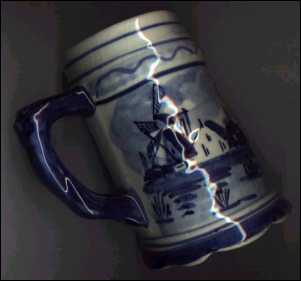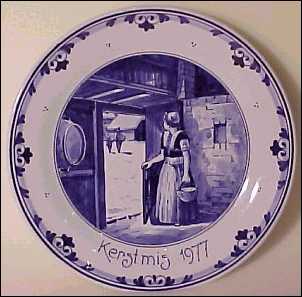![]()
Delft
|
Delft |
![]()
![]() Heavily influenced by Ming dynasty porcelain,
delftware was notable for its thinness and fine decoration, often of manganese
purple drawn on the clay before firing with a blue underglaze. Patterns varied
from highly successful imitations of Chinese blue-and-white wares to
French-influenced classical motifs; designers tended to fill the white areas of
the wares rather than leaving them empty in the Chinese fashion.
Heavily influenced by Ming dynasty porcelain,
delftware was notable for its thinness and fine decoration, often of manganese
purple drawn on the clay before firing with a blue underglaze. Patterns varied
from highly successful imitations of Chinese blue-and-white wares to
French-influenced classical motifs; designers tended to fill the white areas of
the wares rather than leaving them empty in the Chinese fashion.
![]() Production spread to England after William III became king of England in 1689,
resulting in many royal commissions. The principal centres for English delftware
production were London, Liverpool, and Bristol, and Dublin in Ireland.
Production spread to England after William III became king of England in 1689,
resulting in many royal commissions. The principal centres for English delftware
production were London, Liverpool, and Bristol, and Dublin in Ireland.
![]() The 17th century was the greatest age of delftware; production continued well
into the 18th century but was gradually supplanted by porcelain, especially the
English creamwares developed by Josiah Wedgwood.
The 17th century was the greatest age of delftware; production continued well
into the 18th century but was gradually supplanted by porcelain, especially the
English creamwares developed by Josiah Wedgwood.

"SPODE" "DELFT" tanker that measures
over 5" tall
and has a base diam. of over 3" top diam. is 21/2".

10inch diameter hand painted wall
plate
produced by the Royal Delft factory
(De Porceleyne Fles) in Delft, Holland
![]()
questions / comments? email Steve Birks steveb@netcentral.co.uk